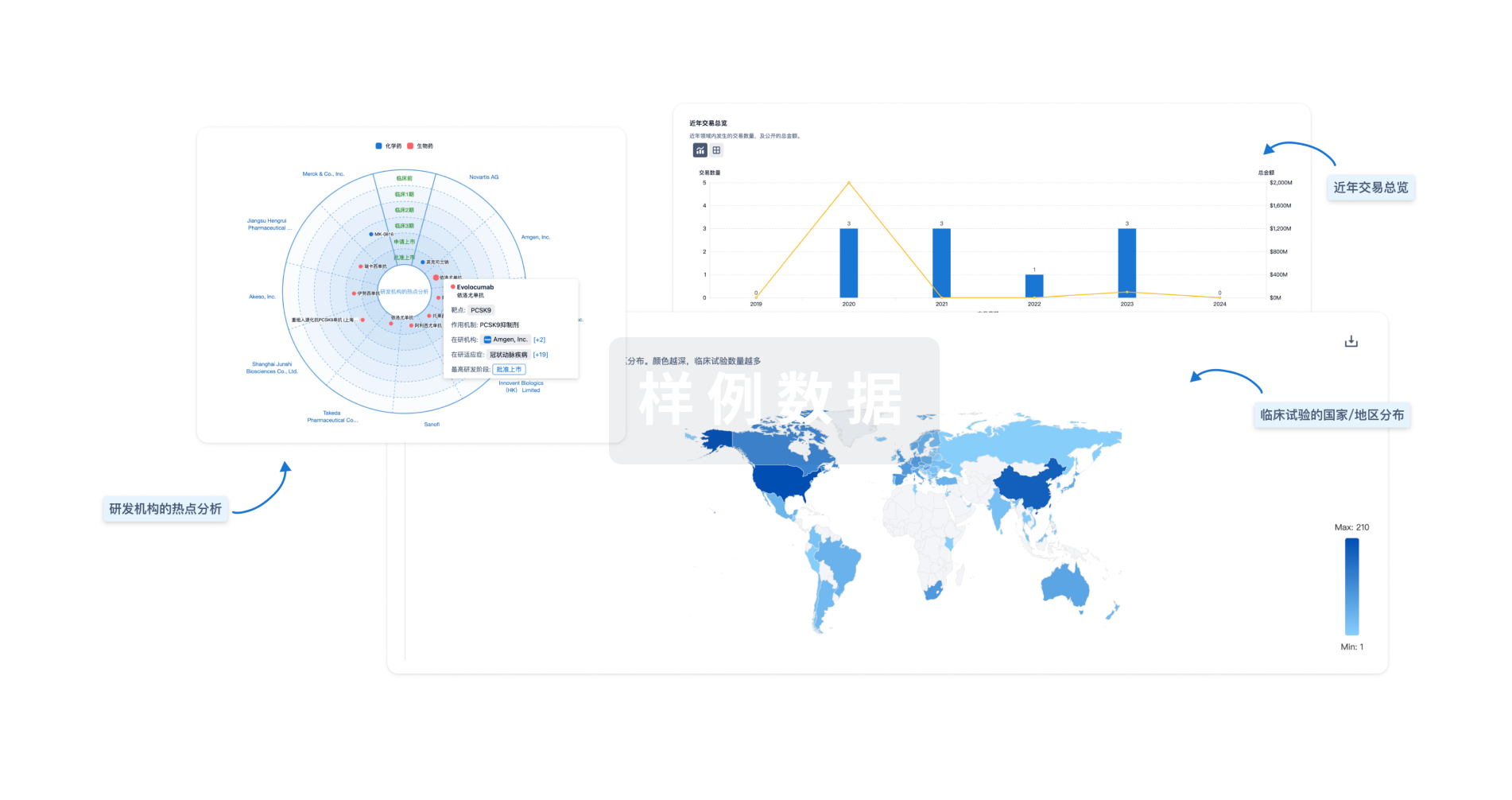预约演示
更新于:2025-07-01
H3K9me3 x UHRF1
更新于:2025-07-01
关联
100 项与 H3K9me3 x UHRF1 相关的临床结果
登录后查看更多信息
100 项与 H3K9me3 x UHRF1 相关的转化医学
登录后查看更多信息
0 项与 H3K9me3 x UHRF1 相关的专利(医药)
登录后查看更多信息
34
项与 H3K9me3 x UHRF1 相关的文献(医药)2025-05-19·CHEMISTRY-A EUROPEAN JOURNAL
Negative Cooperativity in the UHRF1 TTD‐PHD Dual Domain Masks the Contributions of Cation‐π Interactions between Trimethyllysine and the TTD Aromatic Cage
Article
作者: Waters, Marcey L. ; Wilkinson, Jake R. ; Houk, K.N. ; Treacy, Joseph W. ; Dumais, Ryan G. ; Schomburg, Noah K. ; Henriksen, Hanne C. ; Travis, Christopher R.
Abstract:
UHRF1 is a promising epigenetic target in oncology, but inhibitor development has proven challenging due to the interplay between its tandem Tudor domain (TTD) and plant homeodomain (PHD). The TTD binds trimethyllysine (Kme3) at position 9 while the PHD binds Arg at position 2 on histone 3. Herein, we report how the PHD influences TTD recognition of the histone 3 tail containing Kme3 (H3K9me3) versus its neutral isostere, tert‐butyl norleucine (tBuNle). Our findings show that the dual domain binds both peptides equally, supporting tBuNle's potential for inhibitor development. However, unexpectedly, the binding mechanism of H3K9me3 differs between the single and dual domains. In the TTD alone, Kme3 is bound in the aromatic cage via electrostatically tunable cation‐π interactions, but in the dual domain, Kme3 binding is independent of electrostatics in the aromatic cage—an unprecedented observation. Computational studies suggest cation‐π interactions should contribute in both cases. The contrasting experimental and computational results point to an unusual example of negative chelate cooperativity: interactions between the histone and PHD mask the mechanism of TTD recognition of K9me3. This work underscores the complexity of histone post‐translational modification (PTM) readout in multi‐domain proteins and demonstrates the first example of a masked cation‐π interaction.
2025-01-01·MOLECULAR CELL
DNA hypomethylation promotes UHRF1-and SUV39H1/H2-dependent crosstalk between H3K18ub and H3K9me3 to reinforce heterochromatin states
Article
作者: Stransky, Stephanie ; Hoffman, Jordan R ; Wiseman, Ashley K ; Tiedemann, Rochelle L ; Fry, Christopher J ; Sidoli, Simone ; Worden, Evan J ; Rothbart, Scott B ; Chomiak, Alison A ; Hrit, Joel A ; Dickson, Bradley M ; Kariapper, Leena S ; Liu, Yanqing
Mono-ubiquitination of lysine 18 on histone H3 (H3K18ub), catalyzed by UHRF1, is a DNMT1 docking site that facilitates replication-coupled DNA methylation maintenance. Its functions beyond this are unknown. Here, we genomically map simultaneous increases in UHRF1-dependent H3K18ub and SUV39H1/H2-dependent H3K9me3 following DNMT1 inhibition. Mechanistically, transient accumulation of hemi-methylated DNA at CpG islands facilitates UHRF1 recruitment and E3 ligase activity toward H3K18. Notably, H3K18ub enhances SUV39H1/H2 methyltransferase activity and, in colon cancer cells, nucleates new H3K9me3 domains at CpG island promoters of DNA methylation-silenced tumor suppressor genes (TSGs). Disrupting UHRF1 enzyme activity prevents H3K9me3 accumulation while promoting PRC2-dependent H3K27me3 as a tertiary layer of gene repression in these regions. By contrast, disrupting H3K18ub-dependent SUV39H1/H2 activity enhances the transcriptional activating and antiproliferative effects of DNMT1 inhibition. Collectively, these findings reveal roles for UHRF1 and H3K18ub in regulating a hierarchy of repressive histone methylation signaling and rationalize a combination strategy for epigenetic cancer therapy.
2023-07-01·Cell reports
SMYD3 represses tumor-intrinsic interferon response in HPV-negative squamous cell carcinoma of the head and neck
Article
作者: Sevilla, Samantha ; Nakamura, Yusuke ; Brennan, Kevin ; Murali, Madhavi ; Takeuchi, Kengo ; Nigam, Nupur ; Andresson, Thorkell ; Koparde, Vishal ; Bernard, Benjamin ; Chen, Chen ; Carter, Benjamin ; Tettey, Theophilus T ; Tsai, Daniel ; Robbins, Yvette ; Sievers, Cem ; Allen, Clint T ; Licht, Jonathan D ; Van Waes, Carter ; Rinaldi, Lorenzo ; Uppaluri, Ravindra ; Sunwoo, John B ; Hager, Gordon L ; Saloura, Vassiliki ; Saeed, Abbas ; Sater, Houssein ; Edmondson, Elijah F ; Sakata, Seiji ; Moshiri, Arfa ; Das, Sudipto ; Cheng, Hui ; Lingen, Mark W ; Dar, Mohd Saleem ; Kim, Sohyoung ; Bennett, Richard L ; Chari, Raj ; Abdelmaksoud, Abdalla ; Luo, Xiaolin ; Burkitt, Kyunghee
Cancers often display immune escape, but the mechanisms are incompletely understood. Herein, we identify SMYD3 as a mediator of immune escape in human papilloma virus (HPV)-negative head and neck squamous cell carcinoma (HNSCC), an aggressive disease with poor response to immunotherapy with pembrolizumab. SMYD3 depletion induces upregulation of multiple type I interferon (IFN) response and antigen presentation machinery genes in HNSCC cells. Mechanistically, SMYD3 binds to and regulates the transcription of UHRF1, encoding for a reader of H3K9me3, which binds to H3K9me3-enriched promoters of key immune-related genes, recruits DNMT1, and silences their expression. SMYD3 further maintains the repression of immune-related genes through intragenic deposition of H4K20me3. In vivo, Smyd3 depletion induces influx of CD8+ T cells and increases sensitivity to anti-programmed death 1 (PD-1) therapy. SMYD3 overexpression is associated with decreased CD8 T cell infiltration and poor response to neoadjuvant pembrolizumab. These data support combining SMYD3 depletion strategies with checkpoint blockade to overcome anti-PD-1 resistance in HPV-negative HNSCC.
分析
对领域进行一次全面的分析。
登录
或

Eureka LS:
全新生物医药AI Agent 覆盖科研全链路,让突破性发现快人一步
立即开始免费试用!
智慧芽新药情报库是智慧芽专为生命科学人士构建的基于AI的创新药情报平台,助您全方位提升您的研发与决策效率。
立即开始数据试用!
智慧芽新药库数据也通过智慧芽数据服务平台,以API或者数据包形式对外开放,助您更加充分利用智慧芽新药情报信息。
生物序列数据库
生物药研发创新
免费使用
化学结构数据库
小分子化药研发创新
免费使用